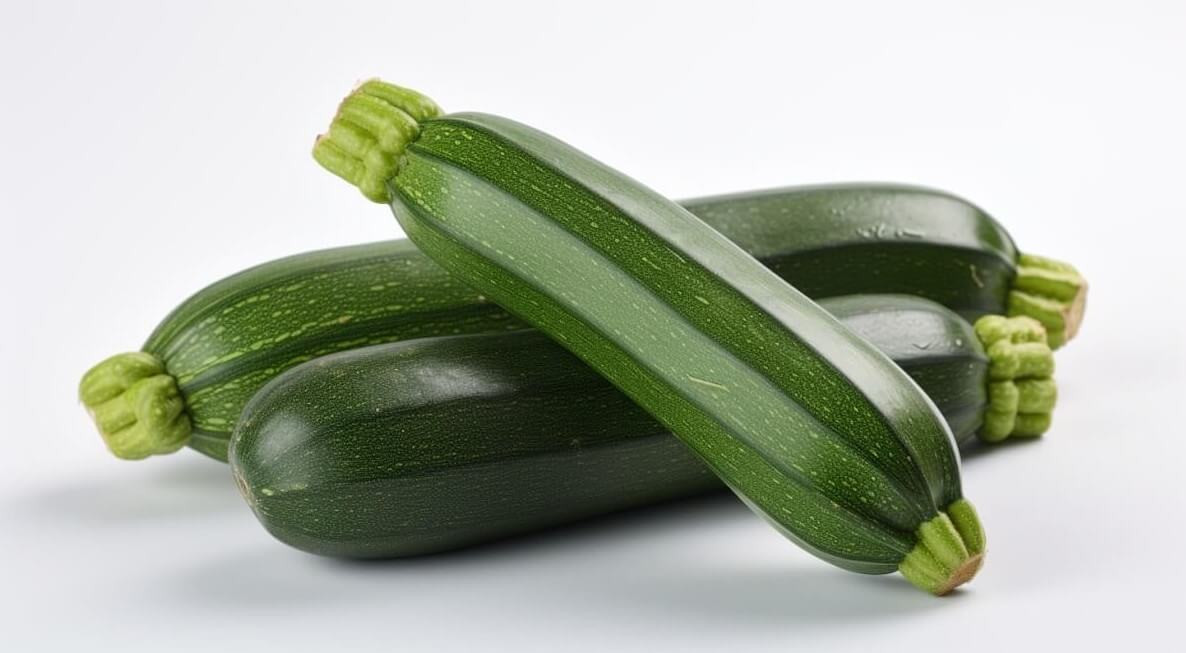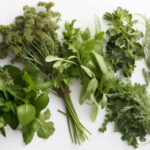Would you prefer to listen to a short podcast discussion about this article? Click on the audio below.
Growing courgettes, also known as zucchini, is a popular pastime for gardeners in the UK. These versatile and easy-to-grow vegetables are a fantastic addition to any garden, with their bountiful yields providing a wealth of culinary opportunities. Whether you are a seasoned gardener or a first-time grower, this comprehensive guide will provide you with all the information you need to cultivate them successfully. From selecting the right variety to troubleshooting common issues, this article will cover everything you need to know to grow healthy and productive courgette plants in your garden.
Introduction to courgette cultivation
Courgettes, also known as zucchini, are a delicious and versatile vegetable that can be used in a variety of dishes. Growing your own courgettes is a great way to have a fresh supply of this tasty vegetable throughout the summer months, and it's easier than you might think. In this article, we will cover the benefits of growing your own courgettes, the climate and soil requirements, how to choose the right variety, preparing the soil and planting seeds, and watering and fertilizing for optimal growth.
The benefits of growing your own courgettes
One of the main benefits of growing your own courgettes is the taste. Freshly picked courgettes have a much better flavour than the ones you buy in the supermarket, which can be bland and watery. Additionally, growing your own courgettes gives you the peace of mind of knowing exactly where your food comes from and how it was grown. Courgettes are also a great source of vitamins A and C, potassium, and fibre.
Climate and soil requirements for courgettes
Courgettes grow best in warm, sunny conditions, with temperatures between 18-24°C. They also need plenty of water, so it's important to plant them in well-draining soil that retains moisture but doesn't become waterlogged. Adding compost or well-rotted manure to the soil before planting can help to improve soil structure and retain moisture.
Choosing the right varieties for your garden
Understanding the different types of courgettes available
Many different types of courgettes are available, including dark green, light green, yellow, round, and long varieties. Some are more suited to certain growing conditions than others, so choosing a variety that will thrive in your garden is important.
Factors to consider when selecting your courgette variety
When selecting your courgette variety, consider factors such as the space you have available, the length of your growing season, and your personal taste preferences. If you have limited space, a compact bush variety may be best. If you have a longer growing season, you may want to choose a variety that produces a high yield over a longer period. If you prefer a sweeter, milder taste, a yellow courgette may be more to your liking.

Preparing the soil and planting courgette seeds
Preparation of soil for courgette cultivation
To prepare your soil for courgette cultivation, start by removing any weeds and stones from the planting area. Then, mix in some well-rotted compost or manure to improve soil structure and add nutrients. Rake the soil to create a smooth, level surface ready for planting.
How to sow courgette seeds
Sow courgette seeds indoors in early spring, or sow directly into the soil from late spring to early summer. Make sure the soil temperature is at least 15°C before planting. Sow seeds 2cm deep and 60-90cm apart, depending on the variety.
Spacing and depth of courgette seeds
Courgette seeds should be spaced at least 60-90cm apart, depending on the variety. The seeds should also be planted around 2cm deep in the soil. Make sure to water the seeds well after planting.
Watering and fertilizing courgettes for optimal growth
Best practices for watering courgettes
Courgettes need to be watered regularly, especially during hot, dry weather. Water the plants deeply every few days rather than giving them a light sprinkle every day. It's also important to avoid getting water on the leaves, which can lead to fungal diseases.
How to fertilize courgettes
Courgettes benefit from regular fertilization. A balanced organic fertilizer can be added to the soil at planting time and then again every 4-6 weeks throughout the growing season. Alternatively, you can add a liquid fertilizer to the watering can and apply it directly to the plants every 2-4 weeks.
Common pitfalls to avoid in watering and fertilizing courgettes
Overwatering can lead to root rot, while under-watering can cause the fruit to become misshapen. It's important to strike a balance and give your plants just the right amount of water. Similarly, over-fertilizing can lead to lush foliage growth at the expense of fruit production, so follow the fertiliser package's recommendations.
Common pests and diseases affecting courgettes and how to prevent them
Growing your own courgettes can be a rewarding experience, but it's important to be aware of the potential pests and diseases that can affect your plants. Early identification and prevention are key in minimizing damage to your crop.
Identifying and preventing common pests affecting courgettes
One of the most common pests that affect courgettes is aphids. These small insects can cause wilting and yellowing of leaves, stunted growth, and reduced yields. To prevent aphids, keep your plants well-watered and healthy, and introduce natural predators like ladybugs or lacewings.
Another common pest is the courgette beetle, which can cause extensive damage to leaves and even the fruit itself. Handpicking and regularly inspecting the plants can help to control infestations, and using insecticidal soap or neem oil can also be effective.
Identifying and preventing common diseases affecting courgettes
One of the most common diseases affecting courgettes is powdery mildew. This fungal disease can cause a powdery white coating on leaves, stunted growth, and reduced yields. To prevent powdery mildew, ensure good air circulation around the plants and avoid overhead watering. Applying a fungicide can also help to prevent and control the disease.
Other diseases that can affect courgettes include bacterial wilt, mosaic virus, and verticillium wilt. These can be difficult to identify, so it's important to practice good garden hygiene and remove any infected plants immediately to prevent the spread of the disease.
Harvesting and using courgettes in cooking
Once your courgettes have reached maturity, it's important to harvest them at the right time and store them correctly to ensure the best quality and flavour.
When to harvest courgettes
Courgettes should be harvested when they are around 4-6 inches long and still firm to the touch. Any larger and they can become tough and bitter. Regular harvesting can also encourage more fruit to grow.
How to store courgettes after harvest
Freshly harvested courgettes can be stored in a cool, dry place for up to a week. If you have a glut of courgettes, they can also be frozen or canned for later use.
Cooking with courgettes: recipe ideas and tips
Courgettes are a versatile vegetable that can be used in a wide range of dishes, from stir-fries and salads to soups and stews. Try grilling or roasting them with olive oil and herbs, or add them to pasta or risotto for a delicious and healthy meal.
Troubleshooting common issues in courgette cultivation
Despite your best efforts, courgette plants can still experience issues. Here are some common problems and how to fix them.
Common problems and how to fix them
If your courgette plants are not producing fruit, it could be due to poor pollination. Try hand-pollinating the flowers with a small brush or Q-tip to encourage fruit development.
If the leaves of your courgette plants are turning yellow or brown, it could be a sign of overwatering or a nutrient deficiency. Ensure your plants are getting enough water and nutrients, but be careful not to overdo it.
How to recognize signs of plant stress and respond appropriately
Signs of plant stress can include wilting, yellowing leaves, and stunted growth. These can be caused by a range of factors, including pests, diseases, overwatering, under-watering, and nutrient deficiencies. Regular monitoring and prompt action can help to prevent further damage to your plants.
Tips and tricks for successful courgette gardening
Follow these tips and tricks to maximize your yield and successfully grow courgettes.
Maximizing yields through proper plant care and maintenance
Regular watering, fertilizing, and pruning can help to keep your courgette plants healthy and productive. It's also important to provide support for the plants as they grow, such as using stakes or trellises.
How to extend the courgette growing season
Courgettes can be grown from late spring to early autumn. To extend the growing season, start your seeds indoors in early spring and transplant them outdoors once the risk of frost has passed. You can also sow a second crop in mid-summer for a fresh harvest later in the year. Growing courgettes can be a rewarding and enjoyable experience. With the right knowledge and care, you can produce a bountiful harvest of these versatile vegetables, perfect for adding to your favourite recipes. By following the tips and techniques outlined in this guide, you can ensure the success of your courgette crop and enjoy fresh, delicious produce all season long.
Frequently Asked Questions
When is the best time to plant courgettes?
The best time to plant courgettes is in late May or early June, when the soil has warmed up, and there is no longer a risk of frost.
How often should I water my courgette plants?
Courgette plants require regular watering, particularly during dry spells. Water deeply once or twice a week, making sure to soak the soil around the roots.
What is the best way to prevent pests and diseases in my courgette plants?
Practising good garden hygiene is the best way to prevent pests and diseases in your courgette plants. Keep the area around your plants clean and tidy, and remove any diseased or damaged leaves or fruit as soon as you notice them.
How can I tell when my courgettes are ready to harvest?
Courgettes are ready to harvest when they reach a length of around 15-20cm, and their skin is firm and glossy. Pick them regularly to encourage the plant to produce more fruit.
If you are keen on organic gardening, check out The Soil Association website
If you need any further information or assistance with this article, don't hesitate to Contact Us




















